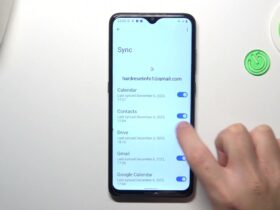Security is a top concern for many organizations, and administrators have long recognized the value of anti-spoofing techniques. These techniques can help prevent network attacks by dropping spoofed packets from network zones not configured to allow spoofed packets. Anti-spoofing is typically used in conjunction with other security techniques and methods for protecting the integrity of a network’s operations. The typical use of anti-spoofing is to prevent network attacks from spoofed IP addresses. Learn why anti-spoofing is essential and how to stop one of the most common attacks.
What is anti-spoofing?
Anti-spoofing is a method of protection that can prevent network attacks from spoofed IP addresses. These attacks are made possible when a hacker uses a fake IP address in an attempt to gain access to a network without authorization. When the attack is successful, the attacker can disrupt services or steal data from other users’ machines. The concept of anti-spoof is relatively simple. It’s the act of preventing unwanted packets from entering or leaving a network zone.
These packets are often used to attack security protocols or access systems and data without authorization. This is leading to devastating consequences for an organization if not addressed quickly. However, it’s a common form of security that helps keep hackers out and prevents them from stealing data or disrupting services. Anti-spoofing works by verifying that any packets entering a network are from legitimate sources before allowing them through firewalls and other security measures.
Anti-spoof checking is a crucial part of network security. It helps verify the legitimacy of any incoming data before it reaches its intended destination. In addition, anti-spoof checking can help prevent spoofing attacks on your network, which could lead to devastating consequences for businesses that rely on their IT infrastructure.
Importance of anti-spoofing

Most networks are configured to block packets that aren’t legitimate. This includes spoofing packets and can allow an attacker to gain access to your network or intercept data traveling across it. Anti-spoofing is an important security measure because it helps prevent this from happening. If you don’t have anti-spoofing enabled, anyone can send packets that appear to be coming from your IP address. This makes it easy for attackers to trick other systems into believing they’re talking directly with you when they’re talking to someone else. Anti-spoofing helps prevent a variety of attacks including Man-in-the-Middle attacks, IP packet filtering, and more.
Man-in-the-Middle (MITM) attacks
Man-in-the-Middle attack occurs when hackers set up a fake network device between two legitimate ones. This allows them to intercept and alter data as it travels back and forth. The most common way this happens is with wireless networks; if you’re using one that doesn’t use encryption, then anyone within range can access the signal without your knowledge. In addition, it prevents hackers from impersonating your company’s IP address to send malicious data packets.
IP packet filtering
The most common type of anti-spoofing is IP packet filtering, which checks that every packet has a valid source address. This is the easiest way to stop spoofed traffic from entering your network
Botnet masking
One way of hacking into a computer is to use an IP address that masks the hacker’s identity. Within a botnet, each computer from the network has its own customized ‘bot,’ which carries out malicious activities on behalf of the attacker. IP spoofing masks the original malicious actor’s IP address by giving each bot in the botnet a different spoofed address. This can increase the lifespan of an attack which means that the attacker can get the best financial benefit.
DDoS attack

Distributed denial of service (DDoS) attacks are an intimidating problem for companies, from Fortune 500 corporations to small businesses. DDoS attacks are highly coordinated assaults on websites and networks in which large volumes of internet traffic — often not originating from the target of the attack — slow or crash a website or network under the strain of having to process all that data. In this context, distributed means there is no single source of the attack. It’s designed to appear as though dozens or hundreds of people are attacking a site or network at once. Denial of service means that those people are trying to access the same site or network simultaneously, preventing legitimate users from being able to do so.
IP Address Spoofing
To get past the IP spoofing protection, hackers must find a way around it. One method is TCP sequence prediction, which means that the hacker knows precisely what sequence of packets will be sent back and forth between two hosts on an open network. This allows them to predict what kind of data will be sent and when. For example, let’s say you have a server that sits behind a firewall. Only people with access credentials can connect to it. If someone spoofs the IP address of one of those users, they may be able to send data through your firewall as if they were actually inside your network.
Anti-spoofing of IP adress
One of the ways to prevent IP address spoofing is by using a firewall. A firewall is a system that filters out any data packets that it doesn’t recognize. This way it can stop any unwanted traffic from coming into your network. For example, the tool would change the IP address of your computer to match that of a different user who has already proven they are over 18. You could then make a purchase and get away with it.
If you took this one step further and used an IP address spoofing tool to connect to the product website from another country, your credit card wouldn’t work. Why? Because it’s not supported there. An IP address spoofing tool allows you to change your computer’s IP address to appear as if it’s coming from another location. For example, you could use this technology to make it look like you’re shopping on a different website or browsing the internet from another country.











